How to Photograph Fireworks
Nail Your 4th of July Fireworks Photos!
If you’ve ever tried to photograph fireworks, you probably already know it can be tricky.
The good news is the only thing standing between you and perfect fireworks photos is a handful of tech tips. And for that, we got you covered!
Andrea McNelley is a Click Love Grow grad and a talented photographer of landscapes and, yes, fireworks!
Read on, and get ready to photograph this year’s 4th of July fireworks like a boss!
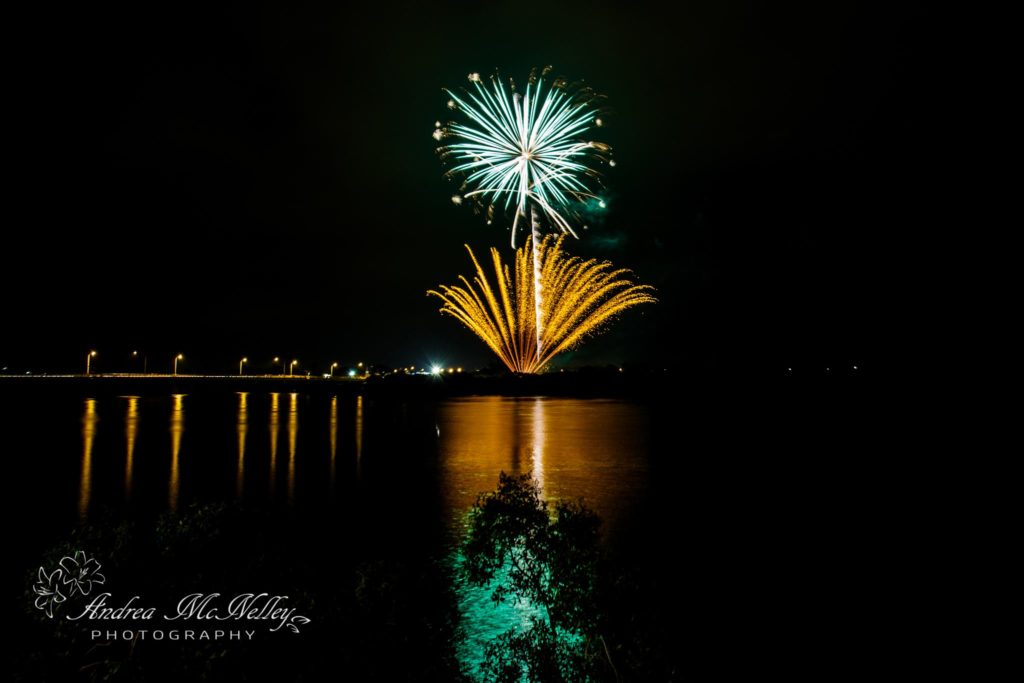
Gear
Camera
You’ll need a DSLR or a camera with the ability to shoot in manual mode so that you can control your exposure.
Your camera won’t be able to capture fireworks in auto mode. If you’re not shooting in manual mode, take the leap and switch over!
Related: Get out of Auto
Lens
I use a 10-24mm lens when I’m situated at ground level and reasonably close. A wide lens enables me to include the foreground and the sky in the frame. This means I can capture the fireworks that burst close to ground, and the ones that burst high in the sky, without having to reframe (which would also mean needing to refocus).
I have had opportunity to shoot from building rooftops, and in this instance I have used a 70-200mm lens. I will also use this lens if I’m going to be far away from the fireworks.
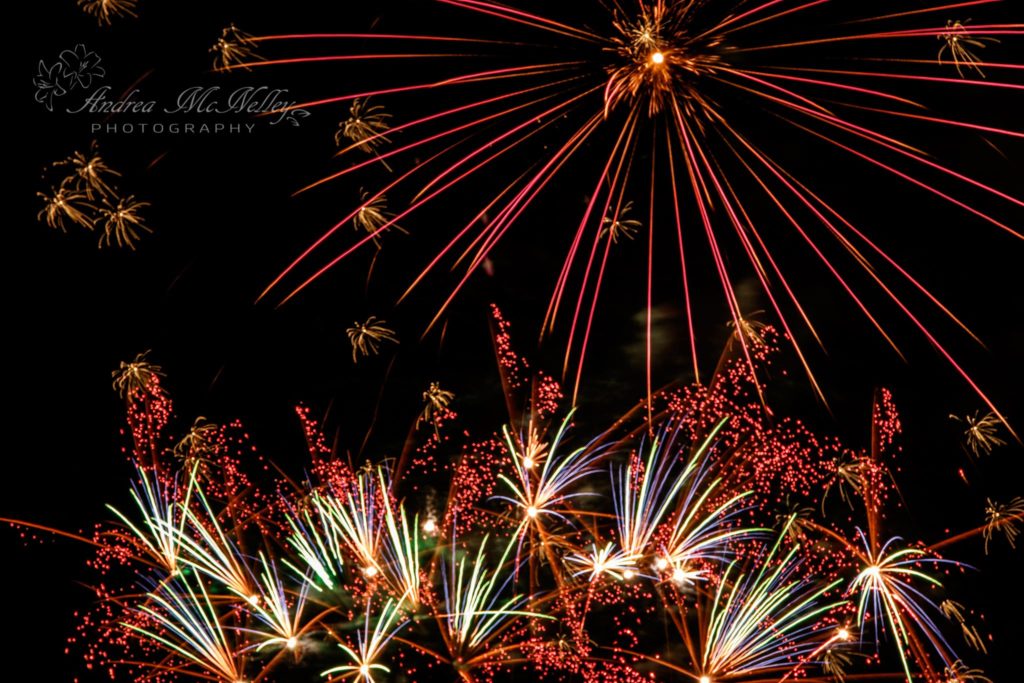
Tripod
You will definitely need a tripod. You’ll be using very slow shutter speeds so if you try to photograph fireworks handheld, you’ll get camera shake. And we know what that means…
…unwanted blur!
Shutter Release
Even the act of pressing the shutter button by hand will record camera shake. So get yourself a shutter release, cable or remote is fine. They’re pretty cheap online.
Torch
I use a torch to illuminate the area I intend to focus, making it easier for the lens to grab and lock focus.

Location
Everyone loves fireworks. No brainer.
But that means crowds, and the only way to ensure they’re not in your frame is to get yourself a handy position. You’ll probably need to turn up early, sit yourself down and wait!
Wind
If it’s a little windy, position yourself upwind, as the wind will play havoc with the smoke and potentially ruin your shots.
Water
If the fireworks are set over water, try and get a spot where you can include the reflections as well. That said, try to avoid setting up on a dock, jetty, wooden pathways or similar, as these will cause movement that will affect your photos.
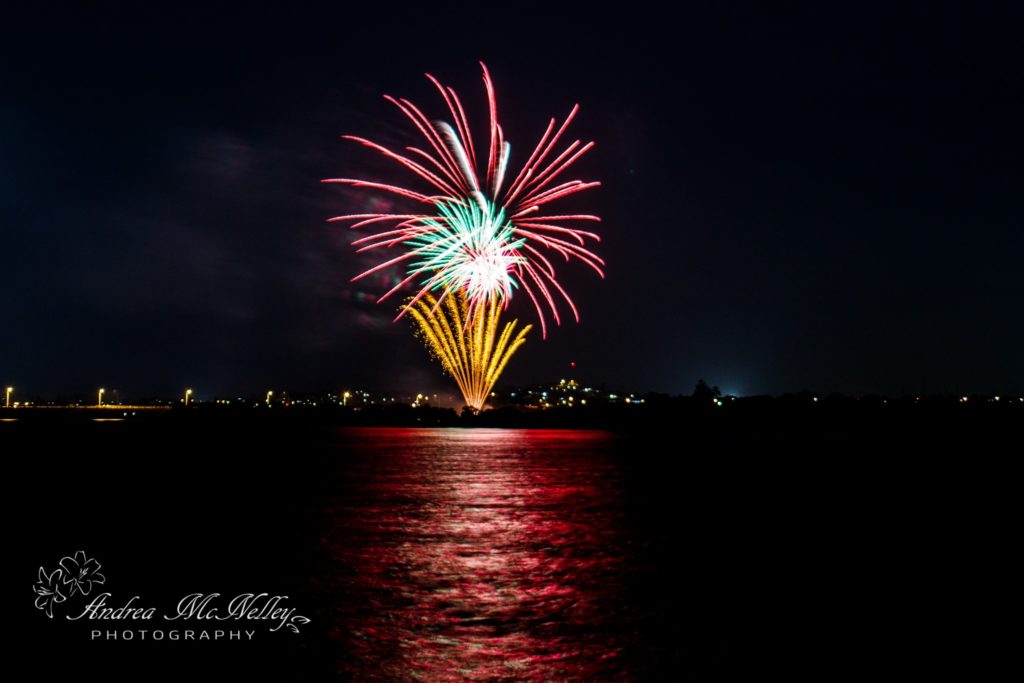
Focus
When setting your focus, frame your shot and find an object to focus on that is around 50m away. If you’re already losing light, you may need to use your torch to illuminate your focus point. Grab focus, then switch to MF to lock it.
Once you’ve done this, be mindful not to accidentally bump the focus ring as it will change your focus point. If this happens, or if you wish to change your focal length, you’ll need to refocus and lock it again.
I have shot fireworks with these settings whether I am right across from the fireworks or several blocks away.
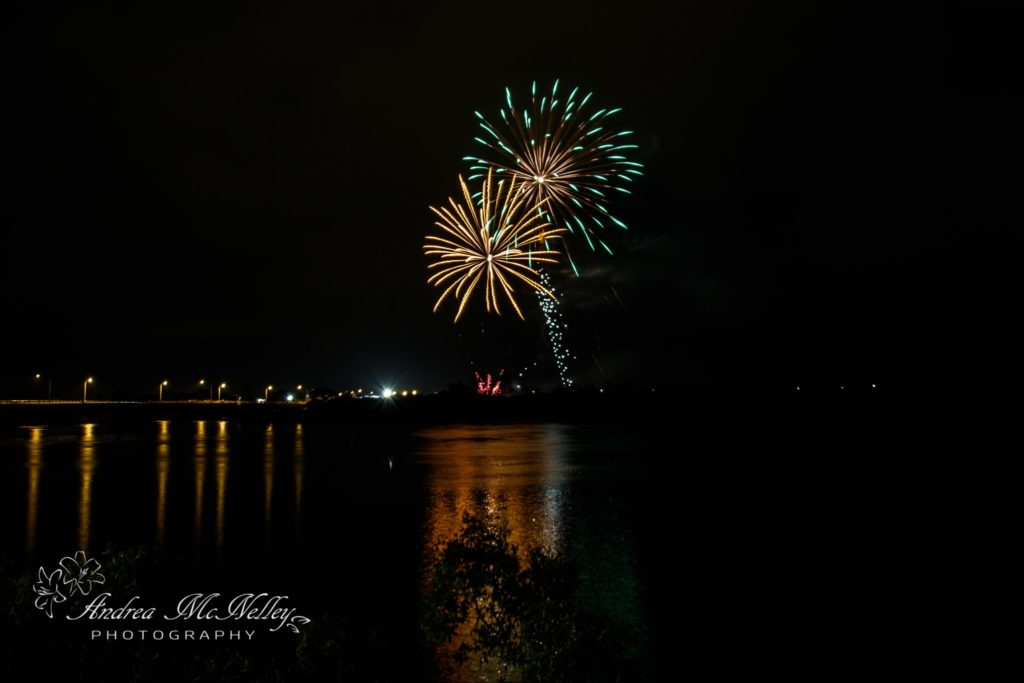
Settings
Shutter Speed
Your shutter speed is the priority when you photograph fireworks. I use bulb mode, because it gives you more control on the shutter.
I keep it open until the blast is disappearing, anything from 1 second up to around 8-9 seconds. Any longer than this can give a mashed up result, or capture more brilliant white than colour. But longer shutter speeds can also give you some fantastic light trail effects, so experiment.
Bulb Mode
Bulb mode enables you to leave the shutter open for as long as the blast is still active, and you want to capture as much of it as possible. Likewise you want to close the shutter before they disappear entirely or you’ll lose colour in the shots.
Aperture, ISO and White Balance
As you’re using a very slow shutter speed, you’ll need to use the narrowest aperture your lens allows, combined with the lowest ISO100 to ensure the shot isn’t over exposed.
Use auto white balance.

Timing
When you photograph fireworks, the key to success is all in the timing. Specifically, knowing when to open the shutter, and when to close it.
When to Open the Shutter
So first up you need to anticipate when a burst will occur, and that’s not as much guesswork as you’d think.
Fireworks closer to the ground tend to be let off in clumps, so as soon as you hear the first sound of fireworks open your shutter.
For the higher fireworks, look for a trail or spark that’s visible between launch and burst, and follow it with your eyes. When they end or slow, the burst is about to take place.
Open the shutter now, just before the burst.
Alternatively, you can open the shutter as soon as the trail appears, and the resulting image can look like a flower.
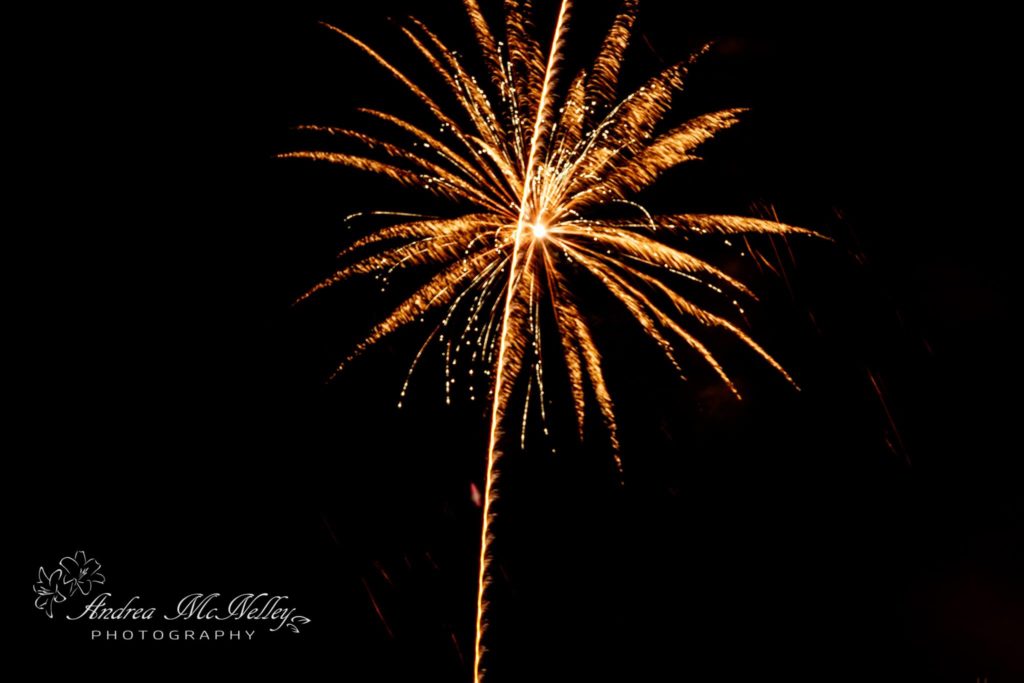
When to Close the Shutter
Close the shutter when the burst is disappearing, or take multiple shots with faster shutter speeds to capture more images of subsequent bursts.
If you leave the shutter open after the bursts have dissipated, you’ll lose colour and capture too much white.

Experiment
When you’re learning to photograph fireworks, ultimately success comes down to experience, intuition, trial and error. There’s no one size fits all when it comes to shutter speed and fireworks, because the timing of the displays will vary. My timing suggestions are just a starting point for beginners. Be guided by the length of the fireworks in knowing when to close the shutter.
With a bit of experimenting during the display, you should be able to get some good shots, and after the fact learn what worked, what didn’t and why.
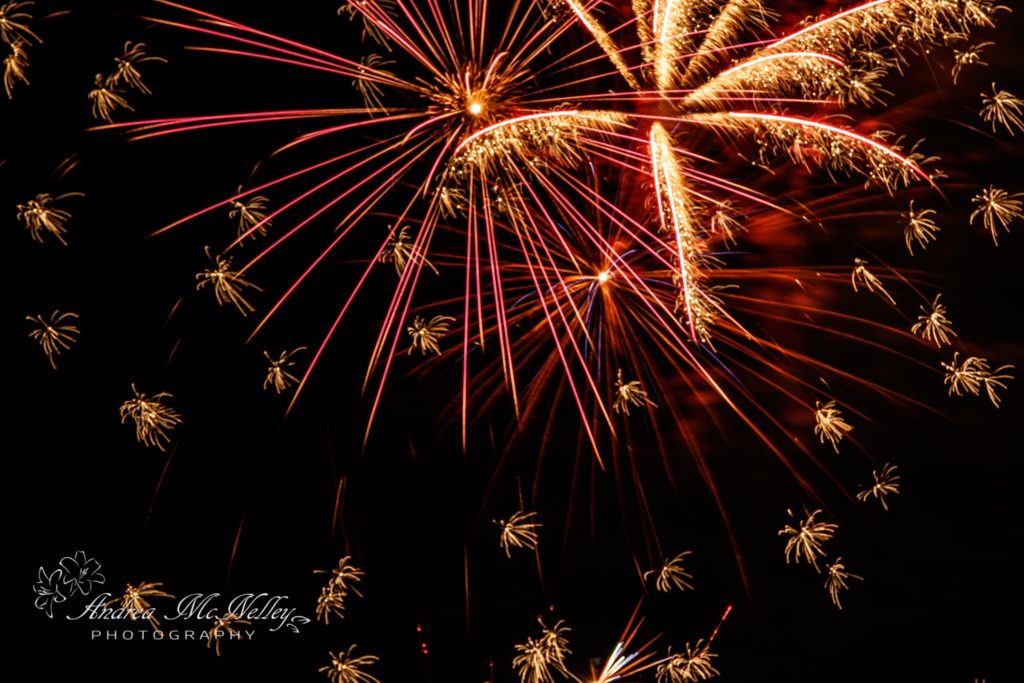
Many thanks to the lovely Andrea McNelley for her words, images, and endless patience through my endless questions!!
If you want to master your DSLR so you can take photos in any situation (like fireworks!)…
Join my Enthusiast Photography Course and I will show you how! Register here!
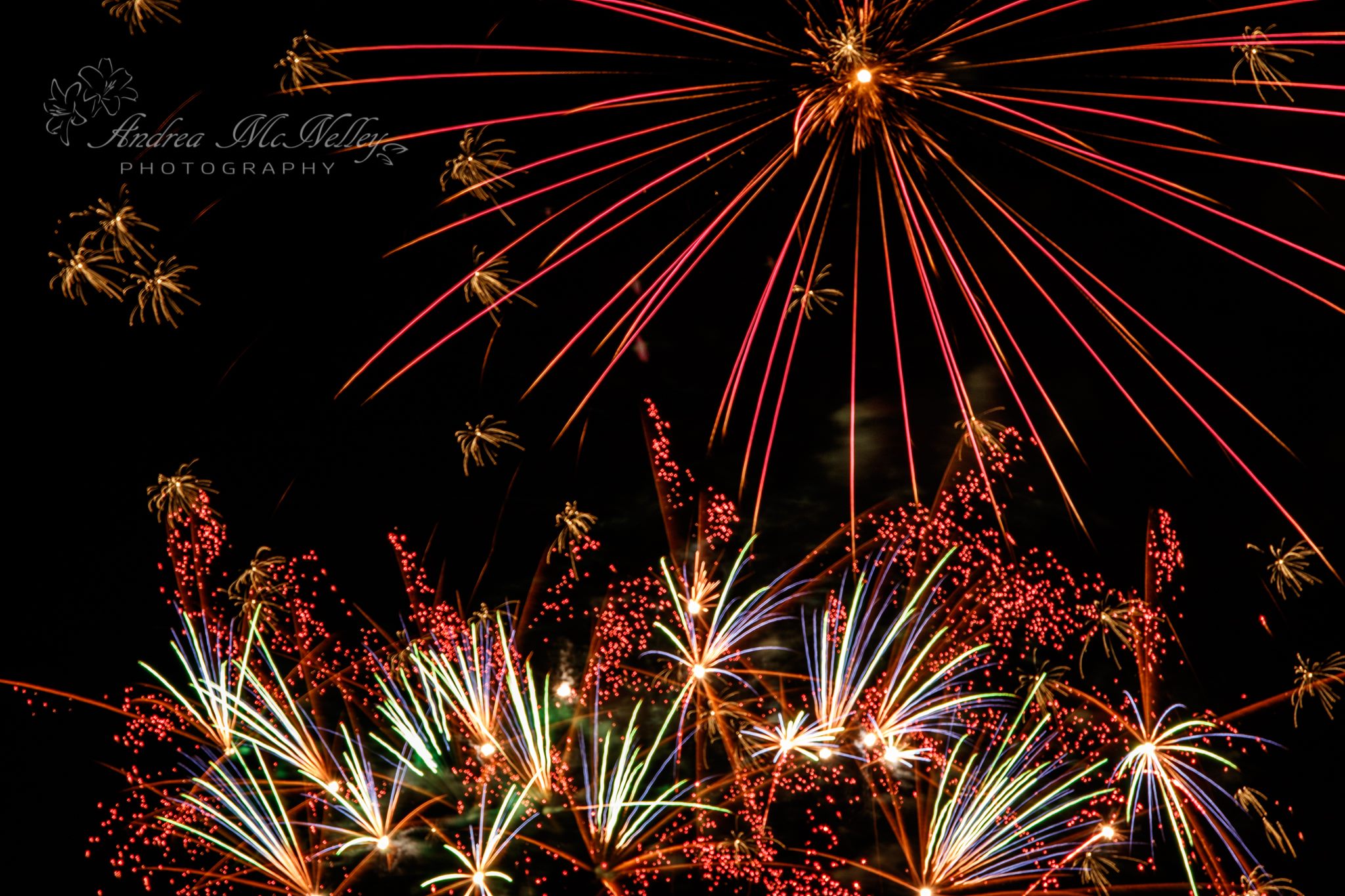
Leave a Reply Cancel reply
PRIVACY POLICY & SITE TERMS AND CONDITONS
CLICK LOVE GROW ™ Pty Ltd - COPYRIGHT 2024 ©
x
Join Now
Enter your info below to join the challenge!
Want a friendly reminder when I go live?
Pop in your number and I’ll shoot you a text.
* We will send text reminders for our live calls during the challenge! Reply ‘STOP’ to end or ‘HELP’ for help.
We promise not to ever share your details with anyone or send you spam! Check our privacy policy and terms of service.
Be the first to comment